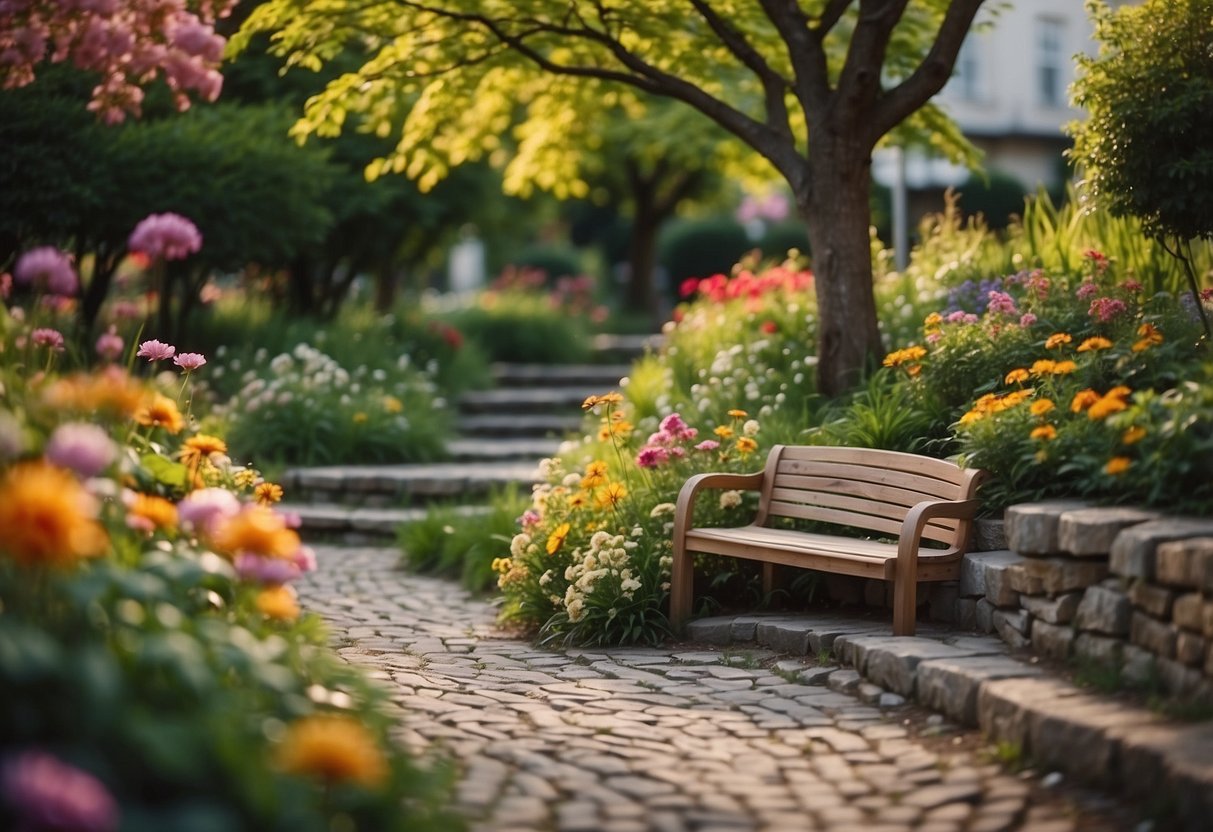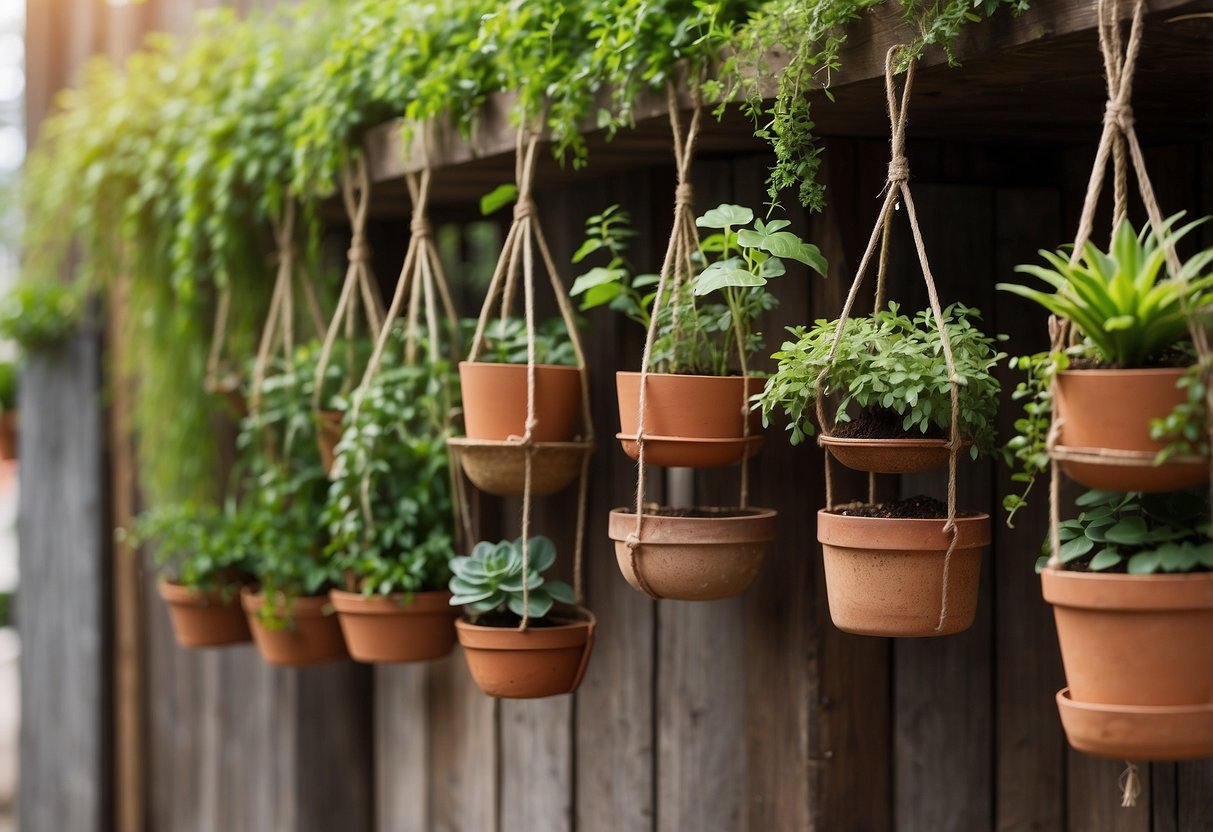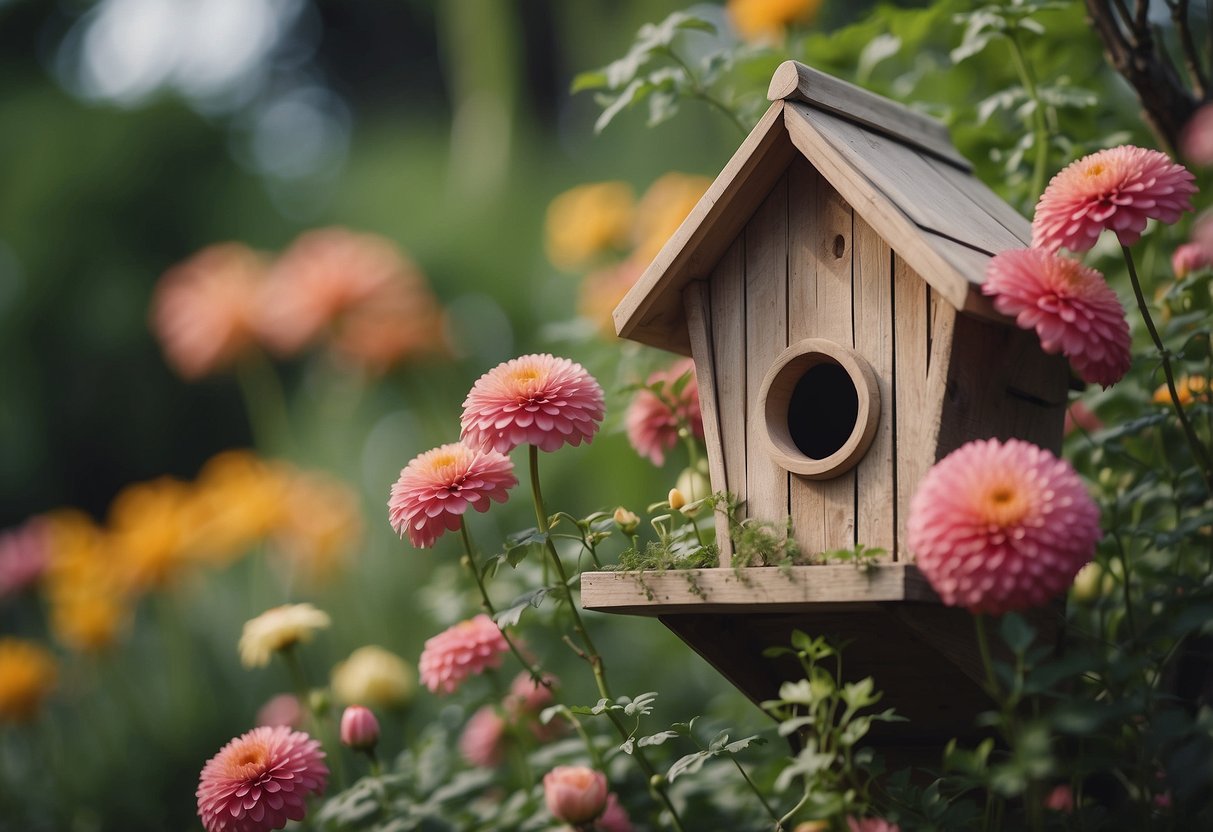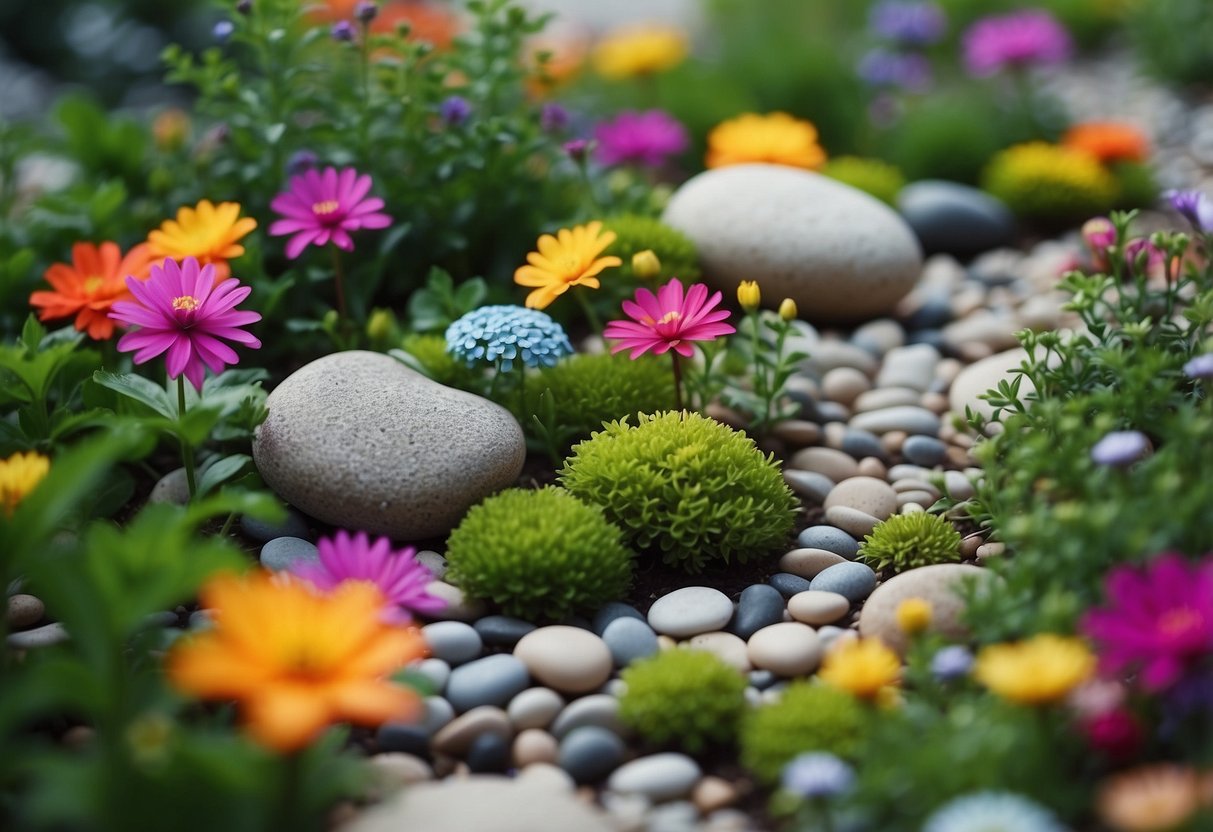Little Garden Ideas for Charming Outdoor Spaces
Small gardens can be just as beautiful and functional as larger ones. Whether you have a tiny backyard, a small patio, or even a compact balcony, there are countless ways to transform these spaces into lush, green retreats.

How can you make the most of every inch of your limited outdoor area? By incorporating smart design ideas and creative planting techniques, you can turn any small garden into your personal oasis where you can relax, entertain, and enjoy nature.
1) Vertical Herb Garden

A vertical herb garden is perfect for saving space and adding greenery to small areas. You can use a vertical garden ladder on a sunny wall to grow herbs like mint, basil, and rosemary.
If you like DIY projects, try making a garden with stacked boxes. This provides enough depth for your herbs to thrive. You could also use terracotta planters on a fence for an easy and beautiful setup. For more ideas, check out these great vertical herb garden ideas.
2) Miniature Fairy Garden

Creating a miniature fairy garden can be a magical addition to your outdoor space. You can use a container garden with good drainage or plant directly in the ground.
Include a small fairy house as a focal point. Adding tiny figurines, such as fairies and woodland creatures, helps bring the scene to life.
Pick some tiny plants and flowers, real or artificial, to complete your enchanting garden. For more ideas, check out miniature fairy garden designs.
3) DIY Garden Path

Creating your own garden path can add charm and functionality to your outdoor space. Flagstone is a popular choice, easy to set in sand for a stylish look. You can find more ideas on A Piece Of Rainbow.
Wood chips offer a natural, low-cost option for your path. They also add great texture to your garden. Check out these wood chip ideas on Rural Sprout.
Using gravel is another simple option. Dig down a bit, lay landscape fabric, and fill with gravel. It’s durable and quick to complete. Learn more on House Grail.
4) Tiered Planter Stand

A tiered planter stand can add height and interest to your little garden. It’s perfect for displaying multiple plants in a small space.
You can make a tiered stand by stacking different sized pots. Start with the largest pot at the bottom and get smaller as you go up.
Another idea is to use a foldable tray table. It’s easy to move and gives you space to show off various plants. For more creative ideas, check out these DIY tiered plant stands.
5) Rustic Hanging Pots

Rustic hanging pots add a charming touch to any garden and are easy to set up. You can use wire hanging baskets filled with colorful flowers like begonias and petunias.
Try galvanized metal tubs for a vintage feel. These tubs are sturdy and give a unique look to your garden space.
Simple materials like a sturdy cord or chain and a hook for hanging can transform basic pots into eye-catching decorations. Drill holes in the pots for drainage when needed.
6) Succulent Terrarium

A succulent terrarium is a fun and easy project. Start with a glass container that has a flat bottom. Add a 1-2 inch layer of pebbles or gravel to the bottom for drainage.
Next, add a thin layer of activated charcoal to keep things fresh. After that, add succulent soil. Then, plant your favorite succulents like Echeveria or Hens and Chicks.
Decorate with small rocks or hardwood pieces. Place it somewhere with indirect sunlight. Remember to water sparingly, as succulents don’t need much water to thrive. Enjoy your new little garden!
7) Charming Birdhouse

Adding a birdhouse can transform your garden into a lively, charming spot. Consider a gnome birdhouse with a pointy hat and whimsical face; it will add character and attract birds.
Or, upcycle an old clock into a DIY birdhouse for a unique touch.
With a mix of rustic wood and metal, you can give your garden a country charm.
Adding one of these charming designs will make your garden even more inviting for both you and the birds!
8) Vintage Wheelbarrow Planter

Transforming an old wheelbarrow into a charming planter is a fun and rewarding project. Begin by cleaning the wheelbarrow and removing any rust or chipping paint. If you like a rustic look, keep the patina.
Once clean, line the tray with landscape fabric. This helps protect the wood and keeps soil from falling through. Arrange a mix of eye-catching, lush plants, and trailing greenery for a stunning display.
For an extra touch, consider adding a coat of paint in your favorite color. This will make the wheelbarrow stand out beautifully in your garden.
9) Colorful Pebble Art

One fun way to add color to your garden is by creating pebble art. You can collect pebbles and paint them in bright colors.
Arrange these colorful pebbles into designs like flowers or butterflies. It’s an activity that kids will love, and it lets them show off their creativity.
Painted pebbles can also be used to make adorable garden decorations like ladybugs or caterpillars.
10) Pallet Planter

Pallet planters are a great way to upcycle old wooden pallets. They can be turned into vertical gardens that save space and look amazing.
You can create a Square Pallet Garden by stacking pallets and filling them with dirt. This method gives you plenty of grow space.
For small spaces, consider a Vertical Herb Garden. Secure small pots or fabric pockets to the slats to grow your favorite herbs.
Planning Your Little Garden

Creating a beautiful and functional small garden involves careful planning. You need to assess your available space, select plants that will thrive, and design an appealing layout.
Assessing Your Space
Before you start planting, understand the size and shape of your garden. Measure the area and note any features like fences, walls, or existing plants. Lighting is crucial; see how much sun different areas get throughout the day. This helps you know where to place sun-loving or shade-tolerant plants. You should also consider soil quality and whether you need to improve it with compost or other materials. By understanding these factors, you can make smarter choices that maximize your space.
Choosing the Right Plants
Selecting the right plants for your small garden involves matching them to the conditions you’ve identified. For sunlit areas, try plants like marigolds or lavender. In shadier parts, consider ferns or hostas. Evergreens provide year-round structure, while seasonal flowers add color. It’s also smart to choose dwarf or compact varieties that fit better in tight spaces. Think about mixing flowers, herbs, and vegetables to make the most of limited ground. This way, your garden remains both productive and visually pleasing.
Designing for Aesthetic Appeal
Designing a visually appealing garden in a small space involves creativity and strategic planning. Use vertical elements like trellises or hanging pots to add height and interest without taking up much ground. Pathways or stepping stones can help define spaces and provide easy access. Incorporate different textures and colors with a mix of plants to create depth. Lastly, include a focal point like a decorative pot, small statue, or a colorful plant to draw the eye and make the garden feel intentional and well-designed. Linking all these elements together can transform a cramped area into a charming and inviting garden space.
Caring for Your Little Garden

Keeping your small garden healthy involves proper watering techniques and proactive measures to prevent pests and diseases. This will ensure that your garden thrives all season long.
Watering and Maintenance Tips
Watering your little garden correctly is key. Use a watering can with a fine rose to avoid damaging plants with a heavy stream. Water the roots instead of the leaves to prevent fungal diseases. Early morning is the best time to water, allowing plants to absorb moisture before the heat of the day.
Mulching helps retain moisture and reduces the need for frequent watering. Use organic mulch like straw or bark. It also suppresses weeds. Make sure to weed regularly to minimize competition for water and nutrients.
Pruning is also an important task. Prune dead or yellowing leaves to encourage new growth and improve air circulation. Regularly check your plants for any signs of distress or nutrient deficiencies and address them promptly.
Pest and Disease Control
Keeping pests and diseases at bay is crucial for a thriving garden. Start by inspecting your plants frequently for signs of pests like aphids, caterpillars, or slugs. Remove pests by hand or use natural repellents like neem oil or garlic spray.
Companion planting can also be useful. Planting marigolds or basil near your vegetables can deter pests naturally. Keep your garden clean by removing dead leaves and plant debris, which can harbor pests and diseases.
If you notice any diseased plants, remove and dispose of them immediately to prevent the spread of disease. Use disease-resistant plant varieties and rotate crops each season to reduce the chances of soil-borne diseases.
Monitor your garden consistently and act quickly to address any issues.







